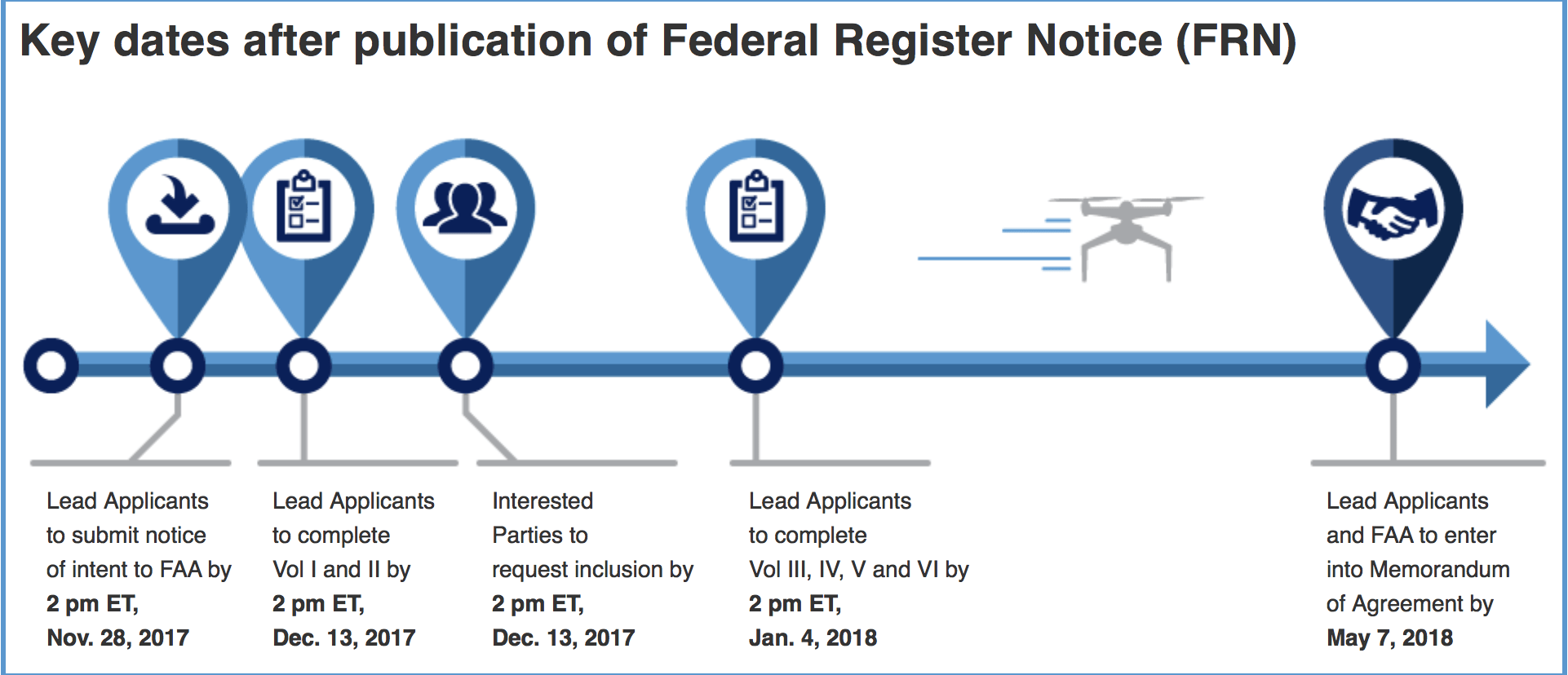Today is the day – the deadline for initial applications to FAA’s UAS Integration Pilot Program, which the FAA characterizes as “an opportunity for state, local, and tribal governments to partner with private sector entities, such as UAS operators or manufacturers, to accelerate safe UAS integration.” The hope is that once this process runs its course, a new and more comprehensive set of regulations and technology will be in place to ensure the safe operation of drones. The win for the industry will be in opening up opportunities that to date have been restricted: flying beyond visual line of site, flying over peopled environments, flying at night. And with luck, doing it in a manner that has consistent regulations nationwide.
The FAA states that “The results from the Program will help to inform the development of future enabling regulations that will expand safe UAS operations and help to transition many of the new and novel operational concepts that we manage today by exception into routine, commonplace aspects of our everyday lives.” There has been a tremendous amount of interest. The FAA wrote in a release that, “There’s already been tremendous interest in the Program and more than 4300 people registered to attend our online webinars to learn how they can participate.”
Here is the current timetable for the process from the FAA (click on image for larger view)
Intel and DJI are two of the larger players working to participate in the program. Today, Intel published an article by Anil Nanduri, VP of New Technology at Intel, in support of the program.
Mr. Nanduri writes that:
[quote]Intel is committed to supporting the drone ecosystem and showcasing how drones can be used in productive and exciting ways, making amazing experiences possible, now and in the future. Intel brings a wide range of technology innovations from the data centers in the cloud to 5G communication platforms, computing on the edge, autonomous vehicles and artificial intelligence. We are excited to join others as the FAA UAS Integration Pilot Program is implemented in states and cities throughout the United States. As UAS technology applications take off, this program and the innovation of the parties involved have the potential to pave the way for American leadership.[/quote]
You can find his full article here.
In a recent press release, the Chinese drone manufacturer DJI expressed its interest in partnering with state, local and tribal governments in the program. In the release, Brendan Schulman, DJI Vice President of Policy and Legal Affairs, states, “DJI has worked for years with government officials around the world to help develop reasonable, safety-enhancing public policies while keeping open the pathways to innovation. We would very much value the opportunity to work with U.S. state, local and tribal governments to develop smart and comprehensive strategies for expanding how drones can benefit their constituents while properly managing their integration into the airspace.”
There has been a bit of a flapdoodle over recent security flaws in DJI drones, their Bug Bounty program launch, and their AeroScope technology. You can find coverage of those DJI issues here. While some twitter wags like to characterize DJI as a “toy company” and construct conspiracy theories, etc., the facts would point to a company that is experiencing some growing pains and working to address them. At the end of the day, the FAA will vet the proposed solutions and chose the best or some combination thereof. This is an important step, and it will be interesting to see the process unfold.
Frank Schroth is editor in chief of DroneLife, the authoritative source for news and analysis on the drone industry: it’s people, products, trends, and events.
Email Frank
TWITTER:@fschroth








Leave a Reply